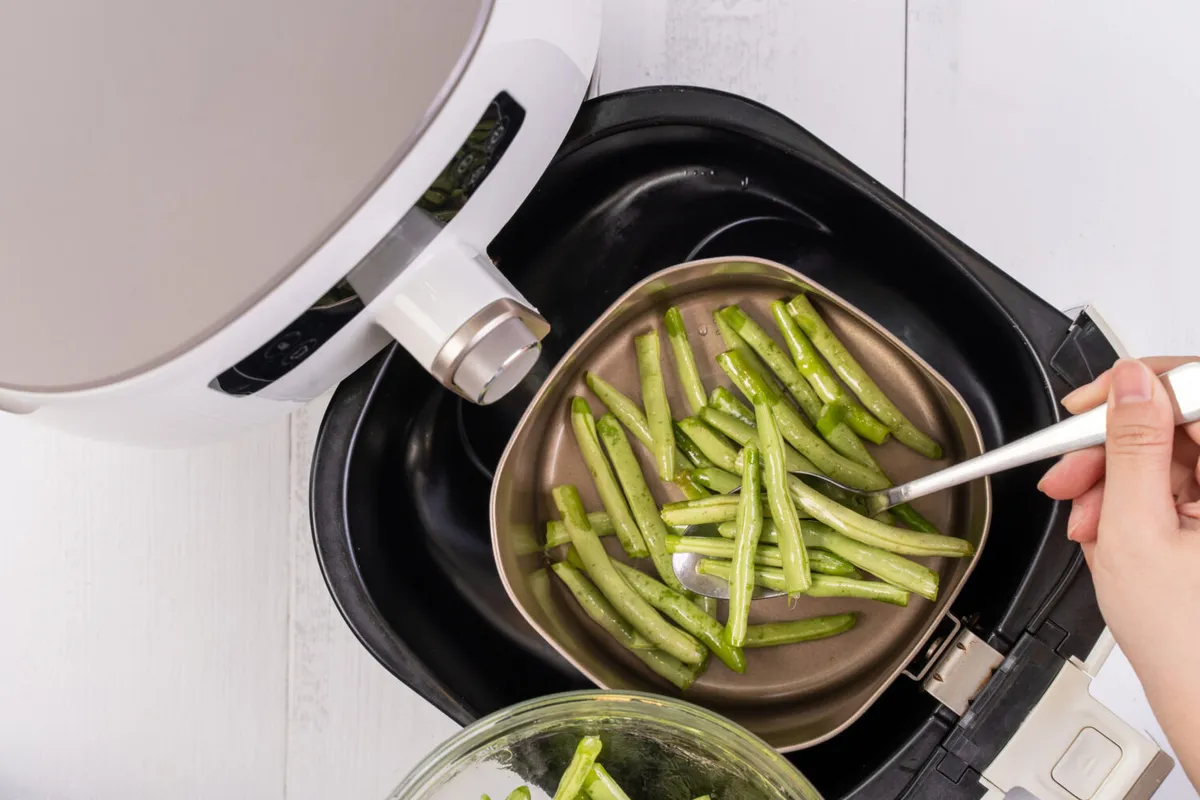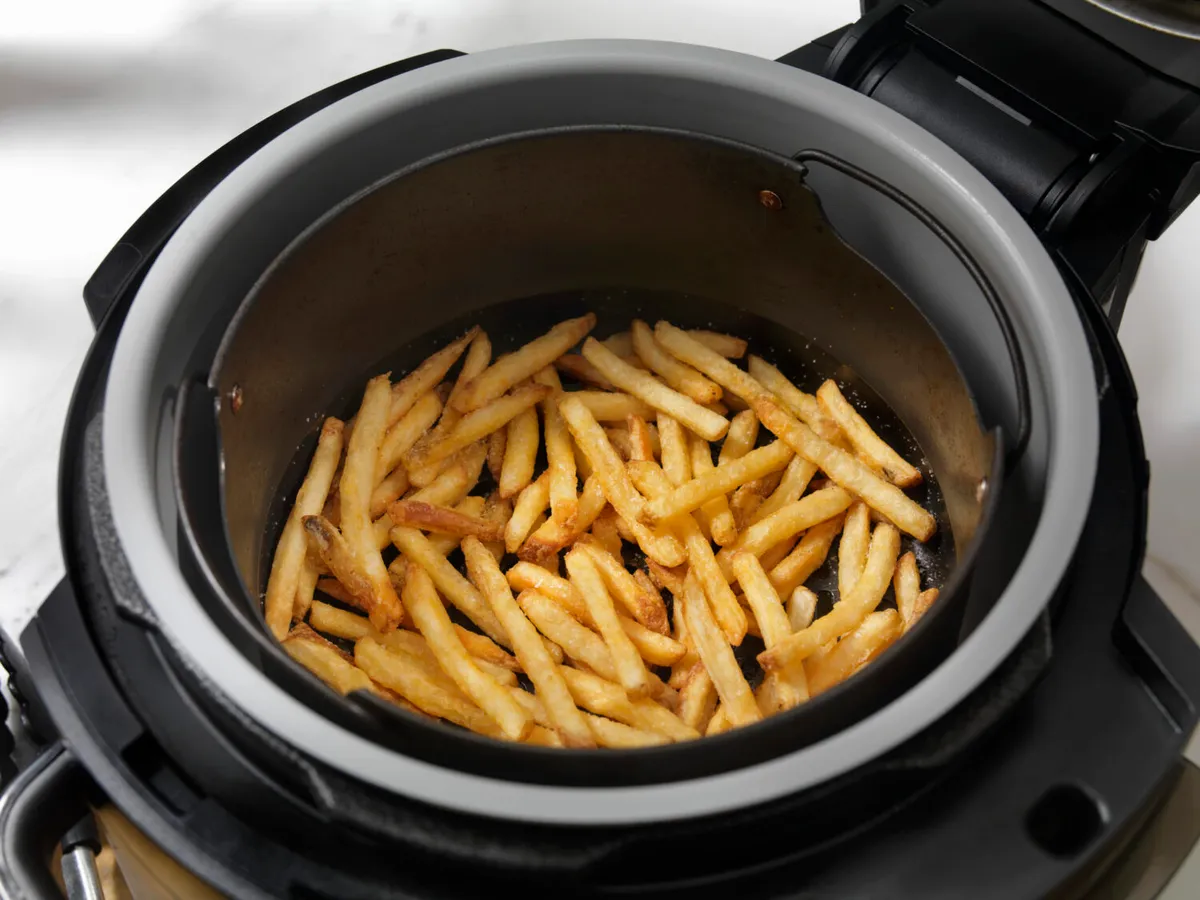Looking for a way to cook food that’s quicker and cheaper than baking it in the oven? A cooking method that’s as tasty as deep-frying, but healthier and easier to clean up afterwards?
Then, if the marketing hype and endless social media mentions are to be believed, you’re looking for an air fryer. But what is this miraculous device and how does it work?
What is an air fryer?
An air fryer is the name for what is possibly the hottest home cooking appliance of the moment. It’s also something of a misnomer, because, strictly speaking, it’s not a fryer. It’s actually more of a high-intensity convection oven.
But whereas a convection oven is typically big, takes a long time to heat up and needs to be installed in some sort of kitchen unit, an air fryer is small, takes next to no time to heat up and sits on your countertop.
How does an air fryer work?

By using a combination of radiation and convection to cook your food. A heating element near the top of the fryer emits heat into the air in the cooking chamber (radiation), while a fan circulates the heated air rapidly around it (convection).
This combination creates a very intense heat transfer, resulting in a cooking method that’s closer to frying than baking. The technical term for it is RUSH, or Radiant UpStream Heating, although, if your air fryer is made by Philips, it’s referred to as Rapid Air Technology.
Best Air Fryers
Air fryers come in all shapes and sizes to suit a range of budgets and cooking needs. We put them to the test to find the best models for 2024. Head to our full round up of best air fryers for more.
The ultimate air fryer: Ninja Foodi Max Health Grill & Air Fryer
The most affordable air fryer: Lakeland Digital Compact Air Fryer
Best for large families: Philips Essential XL
SQUIRREL_TEXT_13062390
Best sub-£50 option: Salter EK2817
SQUIRREL_TEXT_13061497
How is it different to cooking food in a convection oven?
For a start, the cooking chamber in an air fryer is a lot smaller than the chamber in a convection oven, so it’s easier and quicker (and cheaper) to heat.
The key difference, however, is that food cooking in an air fryer sits in a basket that has special channels and vents in its bottom and sides. These channels and vents allow the heated air to rapidly circulate underneath, across and over your food, mimicking the effect of submerging it in hot oil.
Granted, convection ovens also use fans to blow hot air over the food being cooked, but their larger cooking chambers mean the air isn’t circulating as fast and isn’t heating the food as intensely.
How is food cooked in an air fryer healthier?

It’s not the food that’s healthier, it’s the cooking method, because there’s significantly less oil involved. Oil is a fantastic medium for cooking because it retains and transports heat so well. But whether you’re stir-frying, deep-frying or roasting your food, some of the oil soaks in as it cooks, which increases the amount of calories it.
Air isn’t as good a medium for cooking, but by circulating it rapidly in a confined space, an air fryer can almost recreate the same sort of heat transfer you get with oil, but without adding so many calories to your food.
Does an air fryer improve tastes?
Well, that ultimately depends on what you’re cooking, but because of the intensity of the heat transfer caused by the rapid airflow, the Maillard reaction starts sooner in an air fryer than it does in a conventional oven. So, with a bit of practice, you can get the outsides of your foods to develop a brown and flavourful crust quicker, while ensuring the insides remain succulent and moist.
Read more: